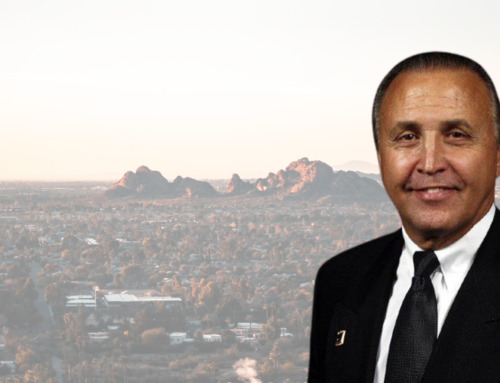Written by: Traci Pritchard, MD, ArMA President
I interviewed Dr. Magu for many reasons. Largely due to location, Yuma Regional Medical Center has unique healthcare challenges. The Arizona Medical Community can hear from a physician central to the Medical Center and the community. These are my questions for Dr. Bharat Magu, the CMO of Yuma Regional Medical Center and a practicing Internist.
- When Mexico residents come to Yuma Regional Medical Center many times they are a visitor/worker in our community, but also often it is an injury upon crossing Border or a patient who checks himself out of a hospital in Mexico with a complex problem and drives to YRMC for care. How does your hospital get paid for these services? We provide all emergency services to stabilize the patient if they present in ED irrespective of nationality in a life-threatening emergency. Some temporary workers have health insurance that covers a fraction of the costs associated with care. we do communicate with Mexicali hospital to transfer Mexican residents after stabilization for further care on a case by case basis. Most other Mexican residents who don’t have insurance and can’t be transferred are considered ‘charitable care’ patients by the organization.
- Is YRMC proximity to the Border make our community more vulnerable to the opioid epidemic and to the particular problems with street Fentanyl when compared to other similar size communities? We have seen markedly increased rates of opioid-related deaths especially associated with street fentanyl over the last 3 months. A significant proportion of these incidents are coming in from South County (San Luis). I can’t compare the current problem in Yuma county with other communities but we are working with EMS, Law enforcement and schools to get ahead of the street fentanyl issue.
- Does Yuma have the proper number of specialists to treat those on chronic very high-dose opioids and those with opioid addiction? Yuma lacks addiction treatment services overall and also has a severe shortage of pain specialists. The lack of services is more prominent after opioid restriction went into effect last year as many of the patients in chronic opioid treatments are using ED to treat pain or request refills.
- Are the recent state or insurance rules with regard to telemedicine sufficient and is telemedicine important to achieve healthcare in Yuma? Telemedicine reimbursement will make some dent in access to care in Yuma but we still need providers in most specialties to take care of the growing community needs. telemedicine will help with goals only in the short term
- What percentage of time do you devote to direct patient care versus Chief Medical Officer responsibilities? 20%
- How does YRMC and your staff utilize Physician Assistants and Nurse Practitioners and how fundamental are they to access to care? APPs (Advance practice providers) are fulfilling a critical role in providing access to care, especially in rural communities like Yuma. They are working in almost every service in the hospital, assisting physicians to extend the care to patients who otherwise would wait months to get access to specialists. These include, but not limited to, fracture/trauma service, Interventional Radiology, Cancer center, palliative care, chronic disease management, and many others.
- What is one thing that surprised you when you moved to Yuma, Arizona? I moved to Yuma almost 10 years back, one thing that surprised me the most at that time was Lack of standardization how we provided health services to the community. that has improved significantly but still has some ways to go before we can call it complete
- I am aware from speaking to AzAFP, the Family Practice Residency program at Yuma Regional is very highly regarded and you always do well in the match. What is the draw to your program? We received close to 2500 applications for 6 positions this year. We generally get residents from our top 10 selection. The opportunity to learn how to deal with challenges of health care in US-Mexico border combined with exposure to a wide variety of pathology and clinical conditions makes it a very competitive program.
- Has the ongoing consolidation of hospital systems and doctor groups impacted YRMC? Yes, close to 30 community providers in various specialties have joined the YRMC (consolidation into the YRMC health system, an independent healthcare system) over the last 3 years. And this integration is expected to continue for another 1-2 years. The burden of regulations and increasing administrative hassles is driving this consolidation in Yuma.
- How do you keep yourself healthy and focused while dealing with hectic administrative and clinical duties? I blow off steam by spending time on hiking trails and also watching the desert around Yuma from a small airplane that I fly whenever I can get a break.
Dr. Magu is an Internist with leadership, management, administrative and clinical experience with an exceptional track record of strategic planning and implementation of transformational projects with successful outcomes in both hospital and primary care settings. He is currently serving as Chief Medical Officer and VP of Medical Affairs at Yuma Regional Medical Center directly supervising over 100 employed medical staff members.





